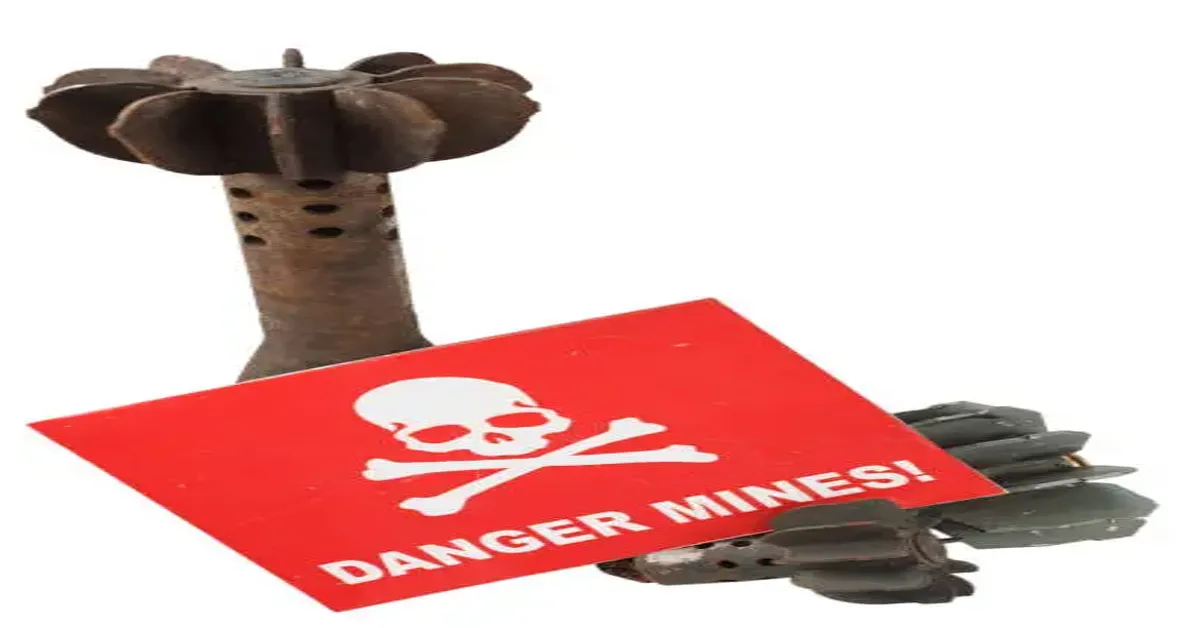For anyone curious about the loud explosions often heard at shooting ranges or in viral YouTube videos, the answer usually lies in a substance called Tannerite. This binary explosive has become popular among shooting enthusiasts for its unique properties: it’s stable until mixed, legal in many areas, and creates dramatic visual effects upon impact. But while it’s exciting and useful, Tannerite also raises significant safety, regulatory, and environmental questions that every user—and neighbor—should understand.
This article explores Tannerite from every angle: what it is, how it works, where it’s legal, its risks, its role in recreational shooting culture, and what both casual users and concerned communities need to know in 2025.
What Is Tannerite?
Tannerite is the brand name of a binary explosive, which means it consists of two separate components that are not explosive until combined. Developed by Daniel J. Tanner in the 1990s, Tannerite’s primary purpose was to provide a safe, non-flammable, long-range target marker for firearm enthusiasts. Unlike traditional explosives, it remains inert—and legally unregulated in many jurisdictions—until it’s activated by mixing.
The product is usually sold in kits that contain:
- Ammonium nitrate (oxidizer) – the primary base, supplied as porous prills.
- Aluminum powder (fuel) – the catalyst that, when mixed with the nitrate and struck by a high-velocity bullet, causes detonation.
Once the two are mixed, the compound becomes a stable but sensitive explosive that detonates only under specific conditions: impact from a bullet traveling at speeds over 2,000 feet per second.
Why Is Tannerite Popular?
Tannerite has gained massive popularity, particularly in recreational shooting and firearms communities. Its appeal lies in several unique qualities:
- Auditory and visual feedback: It produces a loud bang and cloud of smoke, confirming a successful hit from a distance.
- Stability: As a binary explosive, it’s safe to store and handle until mixed.
- Ease of use: Minimal setup, requires no blasting caps or ignition devices.
- Legality: Generally unregulated when unmixed, it skirts many state and federal explosive laws.
Table: Key Facts About Tannerite
| Feature | Description |
|---|---|
| Chemical Composition | Ammonium nitrate + aluminum powder |
| Detonation Requirement | High-velocity rifle round (>2,000 fps) |
| Storage | Stable and non-explosive when unmixed |
| Legal Classification | Not regulated as an explosive until mixed |
| Common Use | Long-range shooting targets, demonstration, media production |
| Typical Quantity Sold | 1 lb to 20 lbs kits |
| Color/Appearance | White or gray powder (unmixed); powdery substance when combined |
| Shelf Life | Several years unmixed |
| Temperature Sensitivity | Low; not highly reactive to heat or flame |
| Ignition Method | High-velocity bullet impact only |
How Tannerite Works: The Chemistry Behind the Boom
Understanding Tannerite’s mechanics requires a basic dive into chemistry. Ammonium nitrate is an oxidizer that, when combined with aluminum powder, becomes an explosive mixture. However, this reaction requires a sudden and intense input of energy to occur—like that provided by a high-velocity bullet.
The aluminum reacts with the oxygen from the nitrate in an exothermic reaction. The impact generates enough heat to ignite this reaction, causing an extremely rapid expansion of gases—an explosion.
The mixture is highly resistant to shock, friction, and fire in its unmixed state, which is why it’s considered relatively safe compared to conventional explosives.
The Appeal in Shooting Sports
Tannerite’s primary function is as a reactive target. When hit by a bullet, it explodes, providing immediate and dramatic confirmation of a successful shot. This has several practical benefits:
- Instant feedback: Useful for shooters testing accuracy over long distances.
- Entertaining: Adds excitement to recreational shooting.
- Educational: Visual and auditory confirmation helps new shooters learn and improve.
Professional marksmen and casual shooters alike use Tannerite for training purposes, while many simply enjoy the spectacle.
Is Tannerite Legal?
The legal status of Tannerite varies across jurisdictions, and it occupies a curious middle ground in explosives regulation.
- Federal Law: Under the Bureau of Alcohol, Tobacco, Firearms and Explosives (ATF), unmixed Tannerite is not classified as an explosive. However, once mixed, it is considered a Class 1.3 explosive, subject to federal regulation.
- State Law: Some states, like California and Maryland, have banned its use altogether. Others allow it under specific conditions. The legality often hinges on whether the user mixes it themselves or purchases it pre-mixed (which is often illegal).
- Transport Restrictions: Transporting mixed Tannerite across state lines or public roads is typically prohibited.
It’s essential for users to check local laws, as penalties can be severe for unauthorized use or possession of explosive materials.
Safety Concerns and Misuse
Despite its reputation for safety when handled correctly, Tannerite has been involved in numerous accidents, injuries, and even wildfires.
Common Risks:
- Overuse: Larger-than-recommended quantities can produce dangerous shockwaves and flying debris.
- Fire hazard: Although not flammable, the explosion can ignite nearby dry vegetation.
- Untrained use: Inexperienced users sometimes underestimate its power or fail to follow safety precautions.
- Curiosity-driven misuse: Some users create large-scale explosions for entertainment or online content, escalating risks significantly.
In some incidents, bystanders have been injured by flying fragments, and law enforcement has investigated reckless uses—particularly when videos of massive Tannerite explosions go viral.
Environmental Impact
An often overlooked aspect of Tannerite use is its potential environmental impact. The explosion itself produces smoke and fine particulate matter, and residues can contaminate soil if not properly cleaned up.
Additionally:
- Noise pollution: Can disturb nearby communities, wildlife, and domestic animals.
- Debris: Litter from shattered containers and surrounding targets can remain in nature indefinitely.
- Soil contamination: Though relatively low-risk, heavy repeated use could deposit nitrates or aluminum particles into the environment.
Some ranges have begun implementing rules to mitigate these concerns, including designated explosive zones and cleanup protocols.
Real-World Incidents: When Tannerite Goes Too Far
Though Tannerite is legal and often used safely, real-world incidents highlight the potential consequences of misuse.
- 2017 Arizona Wildfire: A gender reveal party using Tannerite caused the Sawmill Fire, which burned over 47,000 acres. The user was charged for restitution and became a cautionary tale about responsible usage.
- 2019 Ohio Explosion: A man suffered serious injuries when a large quantity of Tannerite exploded at too close a range.
- 2021 Viral Videos: Online content creators pushing limits with dozens of pounds of Tannerite have drawn scrutiny from the ATF and local law enforcement.
These stories underscore the need for education, regulation, and personal responsibility.
Legal and Regulatory Trends in 2025
As of 2025, lawmakers across the U.S. are increasingly scrutinizing binary explosives. Several new proposals are being debated, aimed at tightening regulations, especially around:
- Bulk purchases: Limiting quantities individuals can buy.
- Event permits: Requiring special permission for public use.
- Video content: Penalizing irresponsible demonstrations of explosive power on social media.
- Training requirements: Advocating that users complete a safety course before purchasing.
Meanwhile, some rural communities are calling for outright bans after repeated complaints about noise, fires, and disruptions.
Safe Use Guidelines
For those who choose to use Tannerite, following proper guidelines is essential. Here’s a summary of best practices:
- Read the instructions: Always follow the manufacturer’s safety guidelines.
- Use small amounts: Most recreational shooters use 1/2 to 1 pound at a time.
- Keep your distance: Stay at least 100 yards away from the target.
- Use in open spaces: Avoid wooded areas, dry grasslands, or populated surroundings.
- Alert neighbors if necessary: Give a courtesy heads-up to prevent panic or misunderstandings.
- Dispose responsibly: Clean up debris and unused material.
Tannerite vs. Other Explosives
To understand its unique niche, it helps to compare Tannerite to other similar materials:
| Explosive Type | Mixing Required | Legal Unmixed | Detonation Method | Primary Use |
|---|---|---|---|---|
| Tannerite | Yes | Yes | High-velocity rifle shot | Recreational shooting targets |
| Dynamite | No | No | Fuse/blasting cap | Mining, demolition |
| Fireworks | No | Regulated | Fuse | Entertainment |
| Black Powder | No | Regulated | Spark or flame | Reloading, pyrotechnics |
| Flash Powder | No | Regulated | Spark | Pyrotechnics |
Tannerite sits at a curious intersection: highly potent but, until mixed, considered safe and relatively unrestricted.
The Cultural Phenomenon: YouTube, TikTok, and Beyond
In the age of digital content, Tannerite has become something of a viral sensation. Videos of refrigerators, vehicles, and even entire buildings being blown apart with Tannerite draw millions of views. But these videos, while dramatic, often showcase unsafe practices.
Platforms like YouTube and TikTok have begun to restrict such content. Yet the thrill of visual spectacle remains a major driver of interest. This has led to:
- Copycat incidents: Some users imitate dangerous stunts without understanding the risks.
- Policy debates: Whether platforms should allow explosive demonstrations at all.
- Industry response: Tannerite LLC has increased its emphasis on safe usage in public messaging.
Is Tannerite Here to Stay?
Despite regulatory pressure and environmental concerns, Tannerite remains a staple in shooting culture. Its legal status, simplicity, and effectiveness ensure it will continue to be used—so long as it’s done safely and responsibly.
Efforts are underway to promote more education around its risks. Shooting ranges and retailers are partnering with local law enforcement to offer informational sessions. Meanwhile, technology may play a future role, such as integrating sensors that monitor shockwaves and alert authorities if thresholds are exceeded.
Final Thoughts
Tannerite encapsulates a modern paradox: a powerful explosive that is widely accessible, relatively safe when used correctly, but capable of causing serious harm when misused. In a time where safety, legality, and digital visibility intersect, understanding this material is not only relevant to gun enthusiasts—but to communities, regulators, and content creators alike.
Whether you see it as a tool for training, a source of entertainment, or a public nuisance, Tannerite’s explosive presence in American life isn’t going away anytime soon. What matters now is ensuring that its use remains as safe, informed, and responsible as possible.
FAQs
Frequently Asked Questions
1. Is Tannerite legal in all U.S. states?
Tannerite is legal under federal law when unmixed, but some states and localities have restrictions or outright bans. Always check state and local laws before purchasing or using Tannerite.
2. How much Tannerite can I legally use at one time?
While there is no federal limit on unmixed Tannerite, many states restrict quantities to under 1–2 pounds per detonation. Large-scale use may require permits or trigger explosive laws once mixed.
3. Can Tannerite start a fire even if it’s not flammable?
Yes. Although Tannerite itself isn’t flammable, its detonation can ignite nearby dry vegetation or combustible materials through heat or flying debris.
4. What distance is considered safe when shooting Tannerite?
A minimum safe distance is 100 yards (91 meters). Larger quantities may require greater distances to avoid injury from debris or shockwaves.
5. Is it legal to post videos of Tannerite explosions online?
Yes, but platforms like YouTube and TikTok have policies restricting dangerous or unsafe demonstrations. Posting reckless use may also draw legal scrutiny from local authorities.











